Each year at my school, the OJCS teachers choose a professional growth project. This project should be in an area where teachers would like to grow and improve their craft. I decided to focus on teaching my students how to document their learning as my growth project. I have launched student blogfolios during the last couple of years. I helped my students populate their blogfolios with projects, speeches, and Innovation Day projects.
This year I wanted to teach my students to take greater ownership of their learning, and what better way to do it than by documenting the process as it was happening. The head of the school, Dr. Jon Mitzmacher, suggested I focus my project on a specific teaching unit in the Spring. I met with our teaching and learning coordinator, Melissa Thompson, to brainstorm possible ideas for such a unit. We settled on a Social Studies unit, and I started to get excited about planning the cross-curricular lessons. Teaching at a trilingual school has time challenges. I have roughly eleven and a half hours a week with each class to teach: English, Science, Math, and Social Studies. The trick is to get the students excited and engaged with a cross-curricular approach. As I walked back to my class, I had the whole unit planned in my head.

I planned a unit on Early Settlers in Upper Canada in the 1780-1850 time period. I decided to teach my classes how to document their learning as we went through another unit. Remote and Hyflex learning put a hold on this in early 2022. The classes started the unit at the beginning of May. The students filled out the KWHL chart before we began. They knew a little about the period and had many questions. We watched films from the NFB(National Film Board of Canada) and read stories about Early settlers. Ms. Brigitte, our school librarian, brought a bin of books to help us begin the research process.
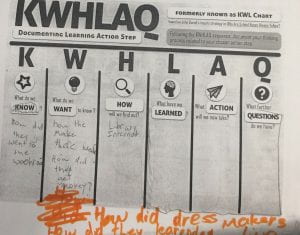

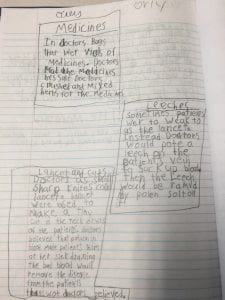
Each class became a village, and the students chose an occupation for their villagers. The children became more interested; the research began. Students searched 1800-era marriage records for the Ottawa area to find villagers’ names. As a class, we discussed different options for presenting our research. We settled on writing a blog post about our villager, writing a letter to a relative describing life in Canada, and writing two Instagram posts. We also thought it would be fun to map the village complete with coordinates. The area and perimeter of the buildings in the village had the students calculating and having fun.


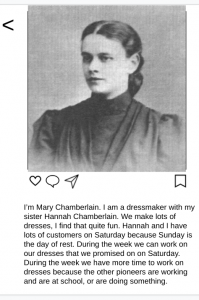
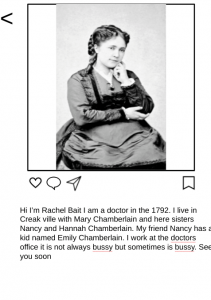
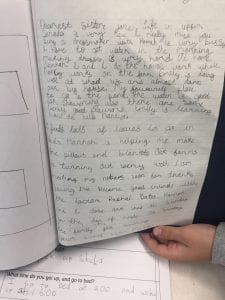
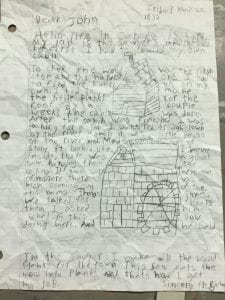
The classes designed 3D models and started constructing the buildings found in the village. Some of my students were less than enthusiastic about this part of the project. They had constructed buildings for an Ideal city project we did earlier in the year. I decided to talk with the classes and see if students would like the choice of how to construct the buildings. I brought up the idea of using Minecraft to make the buildings. Student voice and choice in a project will bring another level of engagement to a project. As a teacher, this type of engagement in work is fun to observe. Students worked on their Minecraft buildings over the weekend, and it wasn’t even part of a homework assignment.
Projects like this have the students self-directed and busy as they work on the different assignments. The next step in this cross-curricular unit is to take it to the top level of Bloom’s Taxonomy; create. Students have the choice to create a newspaper, a podcast, or a news report about life in the early settler village. There is excitement in the air, and the ideas are flowing as the classes brainstorm the best way to complete the project. Stay tuned for the final reveal.
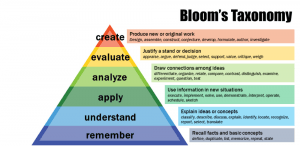
How did the documenting as learning go? The students took lots of pictures and videos. Now I have to get everything onto the blogfolios. At the grade three-level, the teacher is the one to populate the blogfolios. It is more difficult to upload documents, pictures, and videos on iPads. The two classes share 15 iPads for English and Hebrew, and it remains a challenge to have the time to update the blogs.

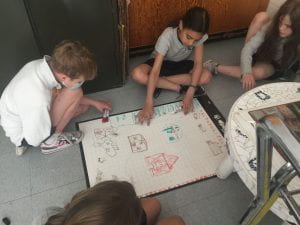

Students reflected on the learning that took place in class discussions. The students will annotate the pictures and reflect once the work is uploaded. I feel strongly about documenting and reflecting on learning. It helps the students be more mindful of the learning process. I liken this to the Teacher professional growth process. The teacher can learn and grow if they want to do the work. It is the same with the children. Teaching students to document their learning would flow right into student-led conferences. It would be a game-changer for learning at this school. Students need to start the documentation process in their younger years. Our North Stars are within reach.
#We own our own learning #There is a floor, but no ceiling


